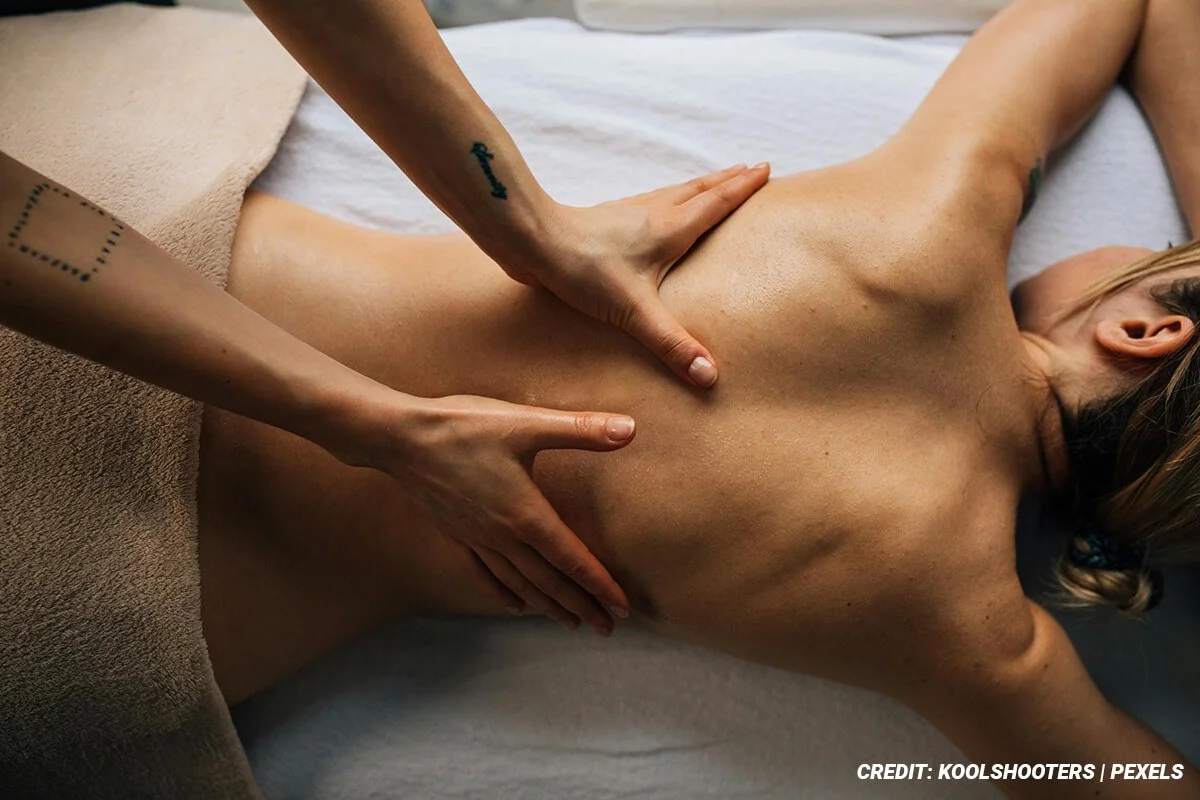Undergoing surgery is a significant event for the body. While the surgical procedure itself aims to correct a problem, the recovery phase is equally critical for restoring function, alleviating pain, and preventing long-term complications. Often, the focus shifts to medication, rest, and physical therapy exercises.
However, a powerful, often underutilized, modality in this journey is deep tissue massage. When applied by a qualified therapist and at the appropriate stage of recovery, a deep-tissue massage can profoundly influence the speed and quality of healing.
Common Post-Surgical Challenges
Following surgery, the body initiates a complex healing process. This involves inflammation, tissue repair, and the eventual formation of scar tissue. While essential for wound closure, excessive or poorly managed scar tissue can lead to several issues:
Restricted movement. Scar tissue is less elastic than healthy tissue. If it forms around joints or muscles, it can limit the range of motion and lead to stiffness.
Chronic pain. Scar tissue can entrap nerves, leading to persistent pain, numbness, or tingling sensations.
Reduced circulation. Dense scar tissue can impede blood flow to the surrounding areas, delaying healing and nutrient delivery.
Muscle imbalances. Compensatory movements due to pain or restricted mobility can lead to imbalances and further strain on other parts of the body.
Traditional physical therapy often addresses strength and mobility, but deep tissue massage offers a unique approach to directly address the underlying fascial restrictions and scar tissue adhesions that can hinder optimal recovery.
How Does Deep Tissue Massage Promote Healing
Deep tissue massage involves applying sustained pressure using slow, deliberate strokes to target the deeper layers of muscle and fascia. Unlike lighter forms of massage, the intent is to release chronic muscle tension and adhesions that have built up over time, or, in the case of post-surgical recovery, as a direct result of the surgical trauma and subsequent healing.
Here’s how it works in the context of post-surgical recovery:
1. Scar Tissue Remodelling
One of the most significant benefits of deep tissue massage post-surgery is its ability to influence scar tissue. By applying controlled pressure and stretching, a skilled therapist can help to break down disorganized collagen fibres within the scar, promoting a more aligned and pliable scar.
This process, known as scar tissue remodelling, can prevent the formation of restrictive adhesions and improve the overall aesthetic and functional outcome of the scar. Early intervention, once the wound has sufficiently healed, can be particularly effective in preventing the scar from becoming rigid and problematic.
2. Reducing Adhesions
Surgical procedures can lead to the formation of adhesions, which are bands of scar tissue that bind together internal organs or tissues that are normally separate. These can cause pain and dysfunction. Deep tissue massage, by applying sustained pressure and stretching, can help to gently release these adhesions, restoring normal tissue glide and reducing discomfort. This is particularly relevant in abdominal surgeries, but can apply to any area where internal tissues have been disturbed.
3. Pain Management
Post-surgical pain can be multifaceted, stemming from nerve irritation, muscle spasms, and inflammation. Deep tissue massage can help alleviate pain by:
Releasing muscle spasms. Surgical trauma can cause surrounding muscles to tense up protectively. Deep tissue techniques can effectively release these spasms, reducing referred pain and discomfort.
Improving circulation. Increased blood flow to the injured area brings essential nutrients and oxygen, facilitating tissue repair and carrying away metabolic waste products that contribute to pain and inflammation.
Modulating pain signals. The mechanical stimulation of massage can also influence the nervous system, potentially reducing the perception of pain.
4. Restoring Range of Motion and Flexibility
When scar tissue and adhesions restrict movement, deep tissue massage can be instrumental in restoring full range of motion. By lengthening shortened muscles and breaking down fascial restrictions, it allows joints to move more freely and efficiently. This is crucial for returning to daily activities and, for athletes, for resuming their sport.
For instance, in an athlete recovering from an injury, specialized techniques similar to those found in sports massage are often employed to address specific muscle groups and movement patterns affected by the surgery, helping them regain peak performance.
Reducing swelling and edema. While initial swelling is a natural part of the healing process, prolonged edema can impede recovery. Deep tissue massage, by improving lymphatic drainage and circulation, can help to reduce fluid retention, thereby decreasing swelling and promoting a healthier healing environment.
Addressing compensatory patterns. When an area of the body is injured or immobilized post-surgery, other parts of the body often compensate, leading to new aches and pains. Deep tissue massage can identify and address these compensatory muscle imbalances and trigger points, preventing them from becoming chronic issues.
When to Introduce Deep Tissue Massage
The timing of deep tissue massage post-surgery is critical and should always be discussed with your surgeon and physical therapist. Generally, it is not recommended during the initial acute inflammatory phase, and certainly not over open wounds or sutures. Once the incision has fully closed, and the initial swelling has subsided, typically a few weeks to a few months post-surgery, deep tissue massage can be gradually introduced. A qualified therapist will always start gently and progressively increase pressure as the tissues heal and tolerate more work.
Finding a Qualified Practitioner
Post-surgical recovery is delicate, so you must seek out a highly skilled and experienced massage therapist. Look for professionals who have a deep understanding of anatomy, physiology, and scar tissue management. They should be able to communicate effectively with your medical team and tailor their techniques to your specific surgical procedure and recovery stage.
At Tui Na Massage & Pain Clinic Toronto, we specialize in holistic wellness and rehabilitation, and offer traditional Chinese medicine practices like tui na.
Conclusion
Deep tissue massage is a powerful and effective adjunct to traditional post-surgical recovery protocols. It directly addresses scar tissue, adhesions, pain, and restricted mobility, so it can significantly enhance the healing process, accelerate rehabilitation, and improve long-term functional outcomes. When integrated thoughtfully and performed by a qualified professional, it can transform a challenging recovery into a smoother, more comfortable, and ultimately more successful journey back to health and optimal function.
Ready to explore the benefits of deep tissue massage for your post-surgical recovery or general well-being? Contact Tui Na Massage Therapy and Head Pain Clinic Toronto today at 416-532-9094 or email info@totalwellnesscentre.ca to schedule your consultation!


